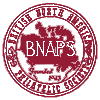The Goebel Press Era of Canadian Stamps
Ken Sargent with Leopold Beaudet
Page 1 - History | Timing | Stamp printing contract | Goebel
press configuration
Page 2 - Manufacturing the cylinders
Page 3 - Producing the stamps
Page 4 - The early months | Later production
Page 5 - People behind the Goebel press | Spoilage & production
approval | Afterthoughts | Acknowledgements | References
The early months
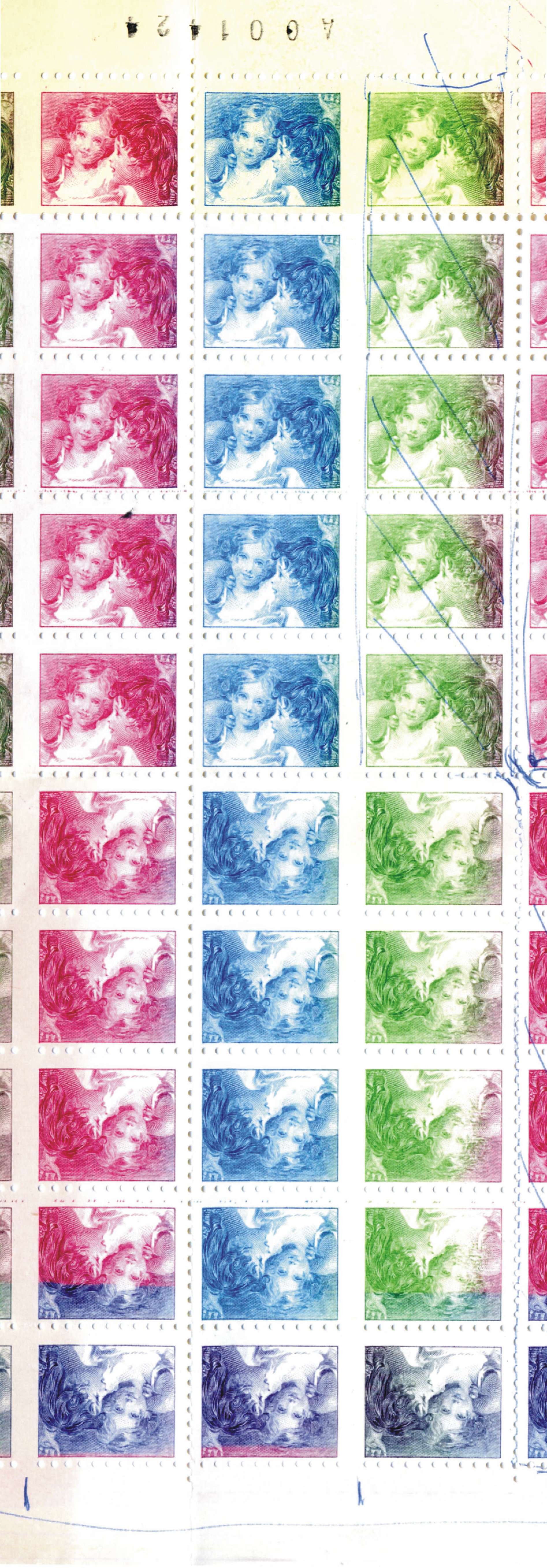
“Baby Sisters” multi-colour intaglio cylinder trial. The labels are laid out in booklet format. A security control number is printed in the top selvedge. [Source: Joel Weiner]
Before accepting the press, we conducted trials at the Goebel plant in Darmstadt. For the press trial, we produced our own engraved cylinder, and shipped it to Germany with our own inks and gummed paper. The cylinder was produced from a vignette called “Baby Sisters” which was based on the painting Calmady Children. George Gundersen, our Art Director and Chief Engraver, chose “Baby Sisters” as the design because it has a wide range of light and dark tones, from the heavy hair on the right to the delicate flesh tones in the face on the left, in a small area.
For the trials, we printed the “Baby Sister” labels in booklet format in various colours. We tested the capability of the press to print several colours from the one engraved cylinder. Our tests were done on pregummed paper with both Davac and dextrine gum. These trial printings were not considered to be security items. Although the bulk of the test runs were destroyed, samples in the various colours were retained for further study.
On subsequent tests, we found that Davac gummed paper presented a problem. Small particles of the dry gum detached onto the printing surface as the roll unwound. These particles prevented paper-ink contact in the gravure units so Davac gummed paper was never used on the Goebel press to print stamps.
At the end of the trials in Germany, the machine was accepted for delivery but things were running behind schedule. Very soon after the press was installed in Ottawa, the scheduling problems began to mount. The Post Office had awarded us several commemorative stamps and these were a high priority to them. These could not be scheduled for the Goebel press, and it was agreed the 1968 5¢ Meteorology, Narwhal, and Hydrology issues would be printed by lithography. This we did.
Instead of being able to start up the press on the definitive stamps to gain experience, it was necessary to begin with the attractive, multi-coloured 5¢ Nonsuch issue, using three gravure units and the intaglio unit. However, we got it done. It was also Canada’s first die-perforated stamp.
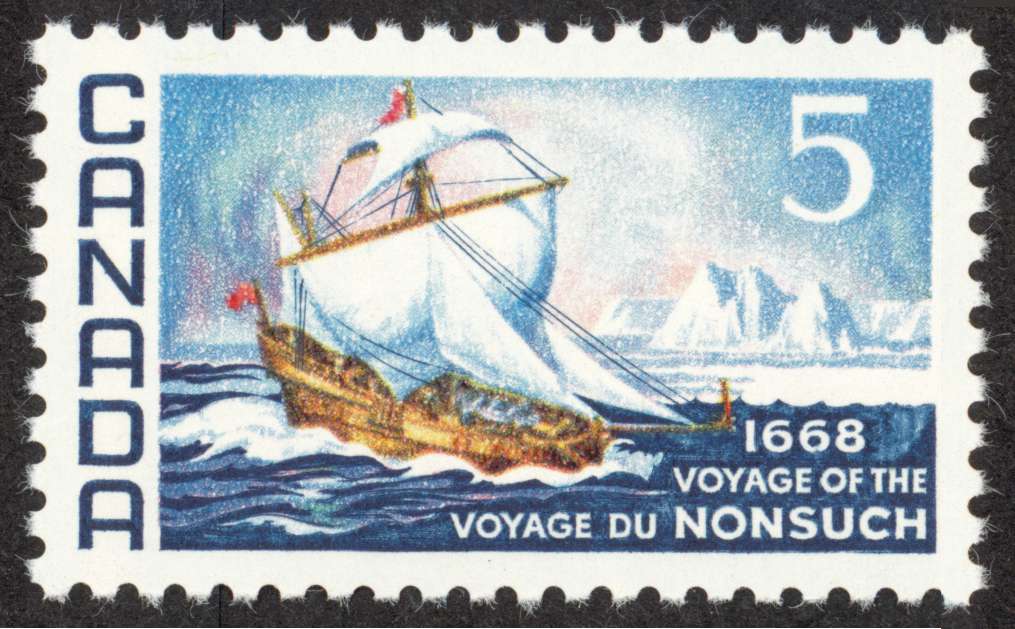
1968 5¢ Nonsuch – three-colour gravure and one-colour intaglio. Designed by George Fanais and engraved by George Gundersen. |
Next we had to print the 1968 5¢ Lacrosse issue which went well, followed by the 5¢ George Brown, a very difficult subject for the new press and its operators. All parties would have preferred a slightly stronger image of the Brown portrait which would have required a new set of gravure cylinders and jeopardized the date of issue commitment. Some improvement was made by adjusting inks. For BABN, it was important to get this third commemorative off the press to enable us to produce stamp rolls to get the booklet machine going and to begin supplying definitives for the first class rate.
Multi-colour intaglio printing was first used for multi-denomination booklet stamps and worked well. The first such booklet was a 25¢ booklet with five 1¢ brown and five 4¢ red Centennial definitives issued in September 1968.
The interim supply of panes and booklets fell to CBN under agreement, and I am certain they were delighted to see these orders. A further problem was brought to our attention. Our price for booklets was substantially lower than CBN’s, and we were requested to make up the difference on these undelivered booklets. That hurt.
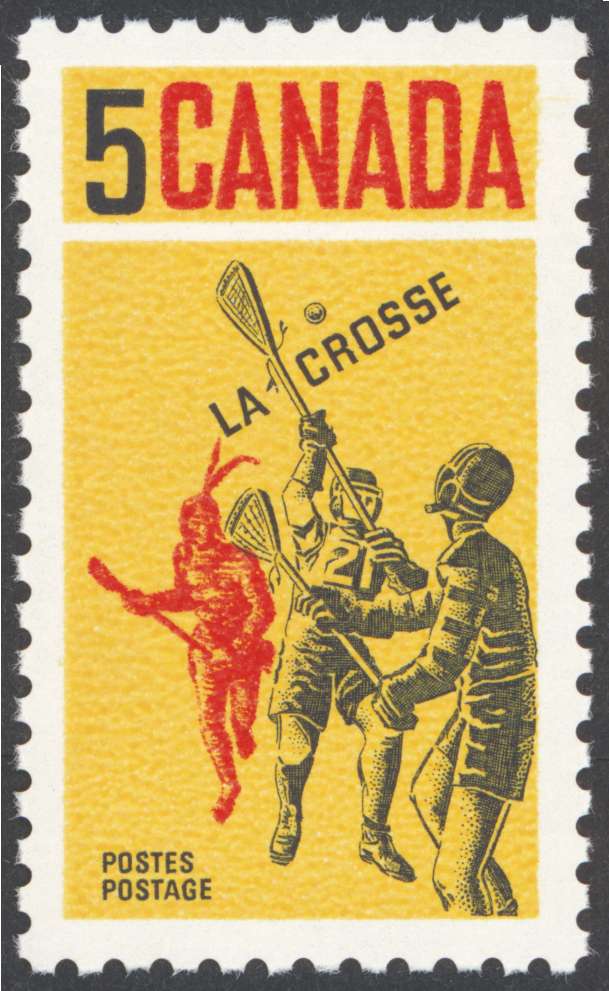
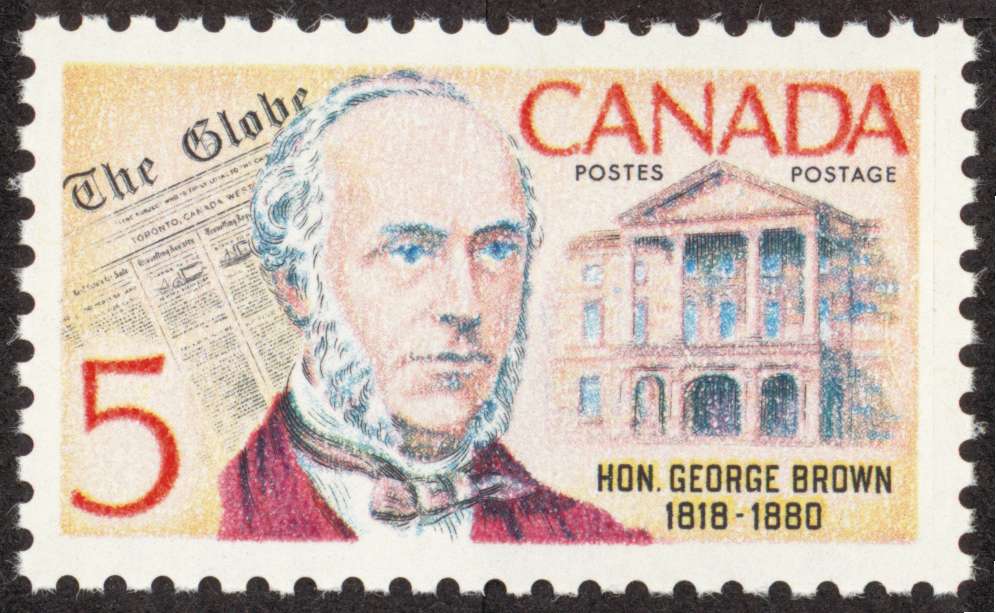
The other 1968 commemoratives printed on the Goebel press
|
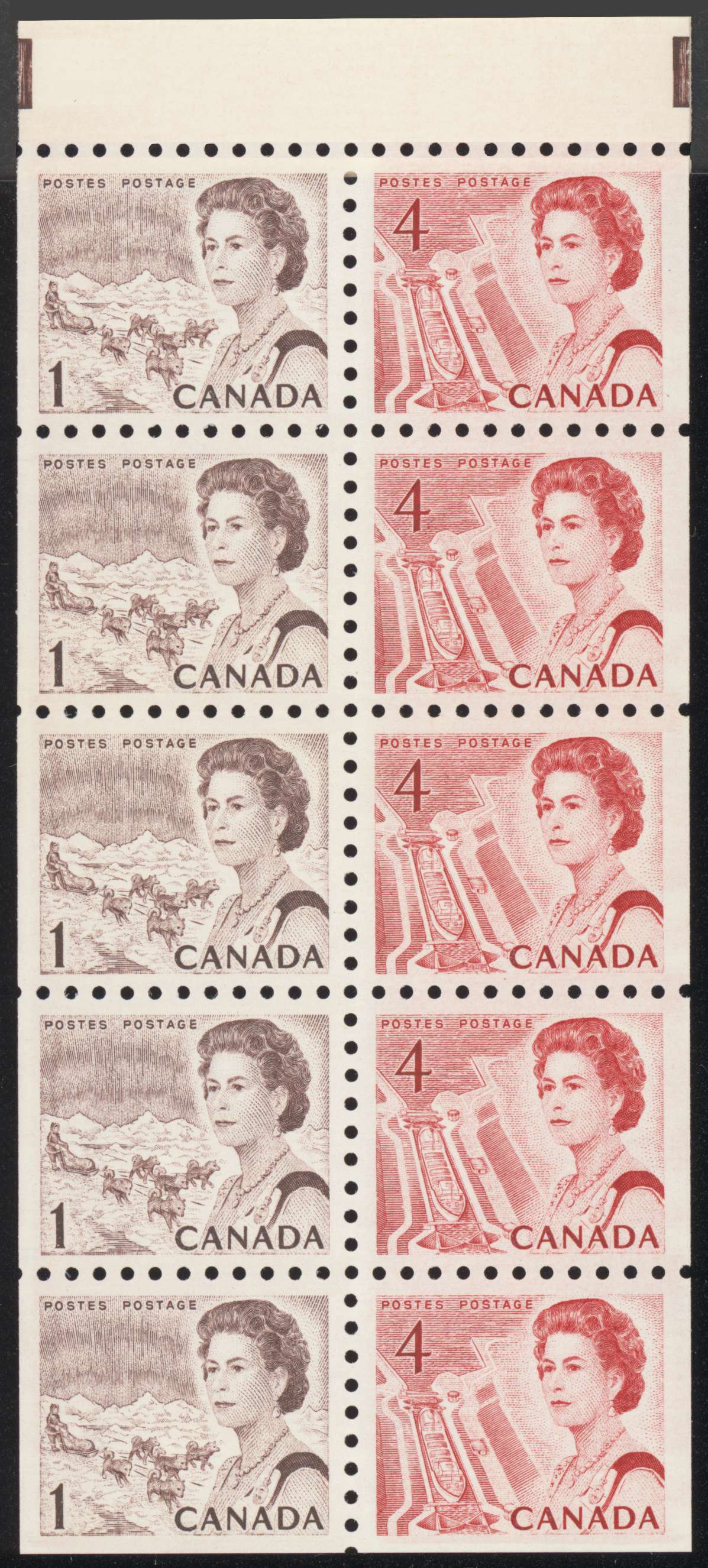
25¢ Centennial booklet pane. The two colours were printed from a single intaglio cylinder. This was the first use of the Goebel press to print stamps with more than one intaglio colour. |
Later production
In the next few years, several commemorative stamps were produced on the Goebel press. There were six commemoratives in 1969 including the 6¢ Osler and 6¢ Leacock, four in 1970 including the 6¢ Henry Kelsey, three in 1971 including the 6¢ Papineau and 7¢ Laporte (which I feel is one of the finest examples of the art of steel-engraved, single-colour portraiture), and four in 1972 including the 8¢ Frontenac and the 8¢ Native Indians se-tenant pair. The Native Indian series was well suited to the press. The medium value Landscape definitives also appeared in 1972.
For the Henry Kelsey commemorative, apparently there was no photo or image of the explorer. But when the designer, Dennis Burton, visited our plant to view the production, it was obvious this was a self-portrait. When asked about this, Mr. Burton just smiled.
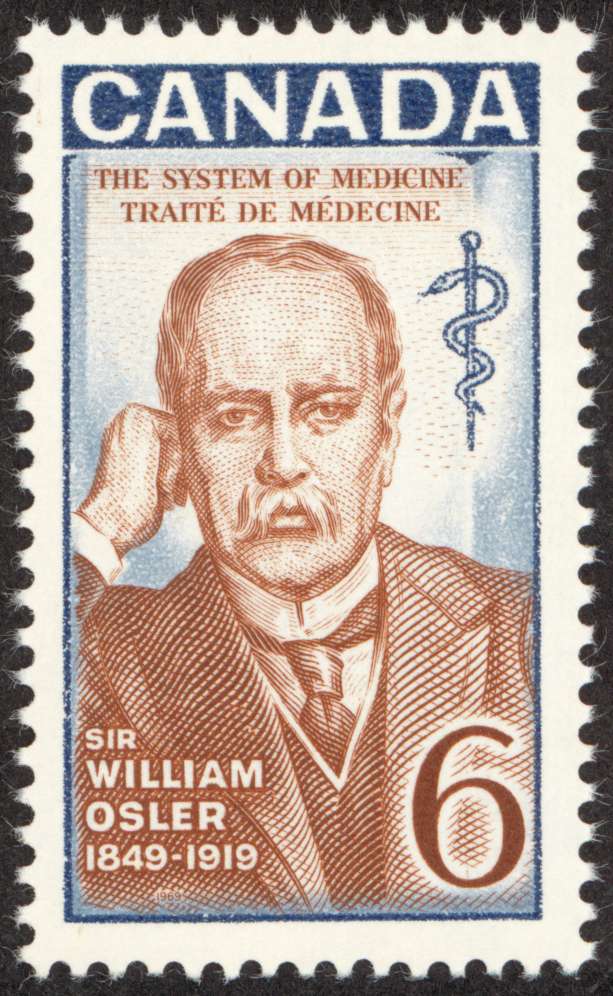
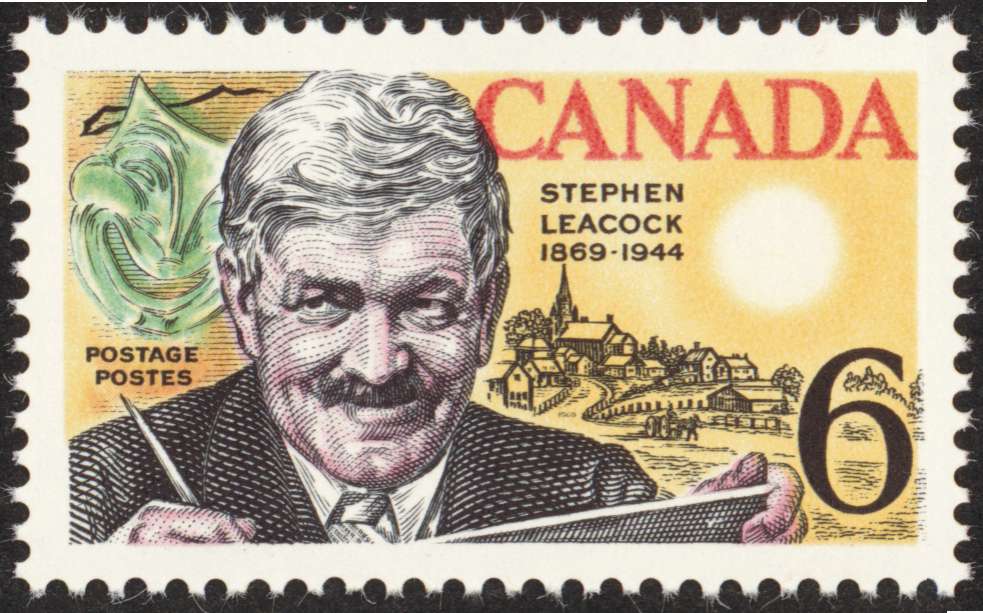
Two of the six 1969 commemoratives.
|
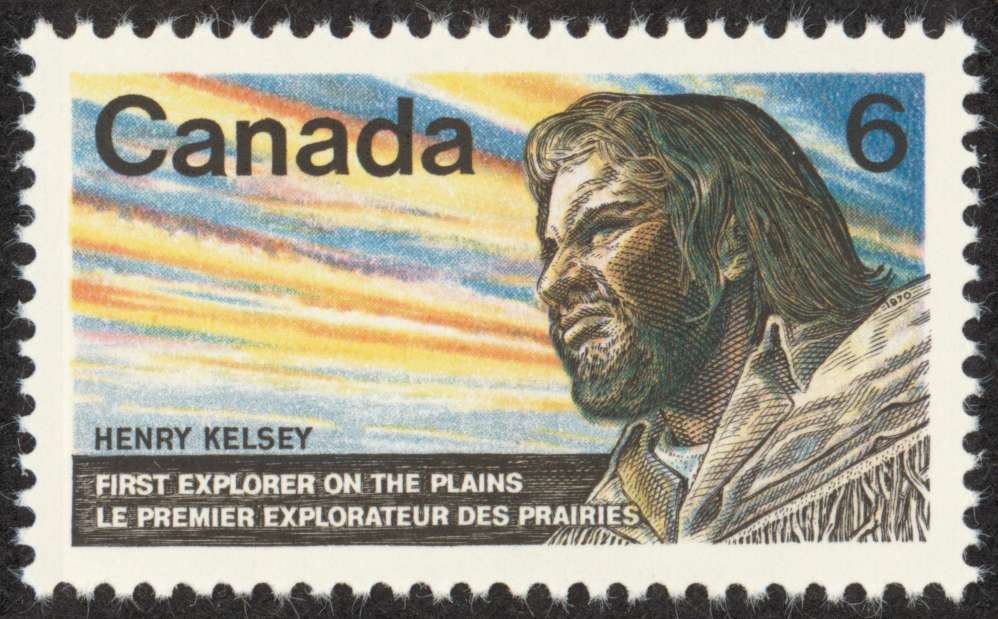
One of the four 1970 commemoratives.
|
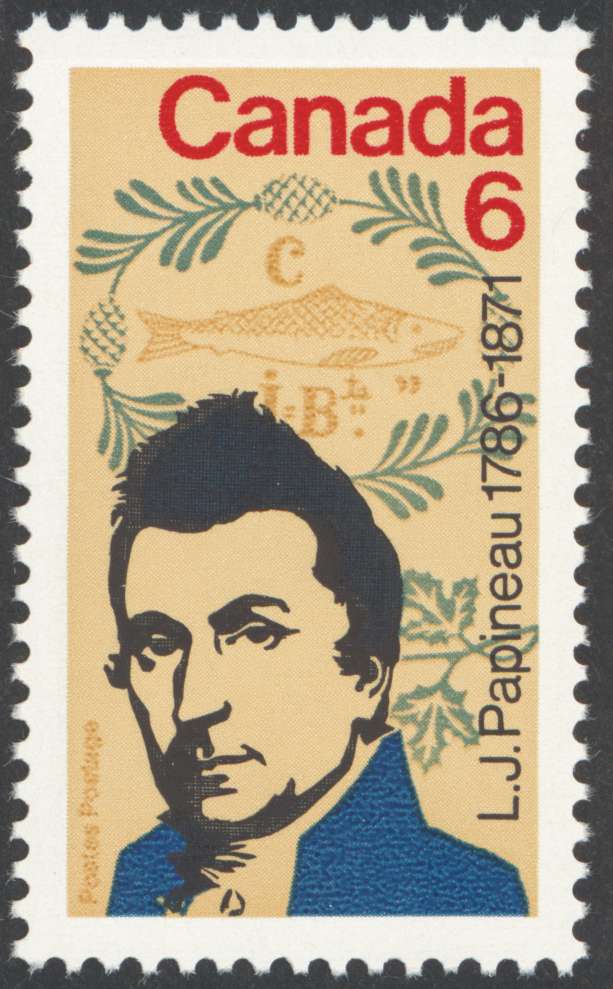
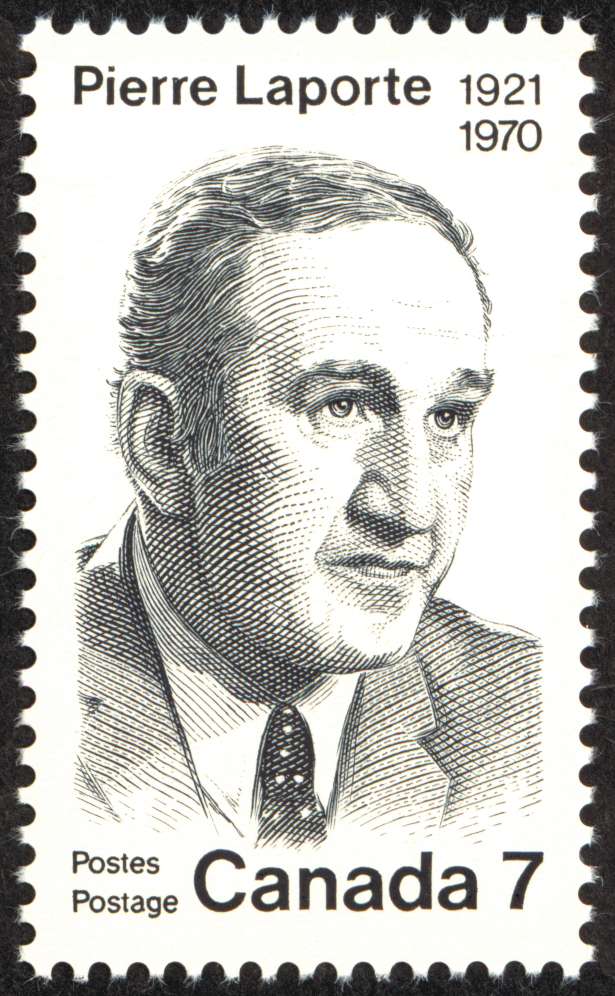
Two of the three 1971 commemoratives.
|
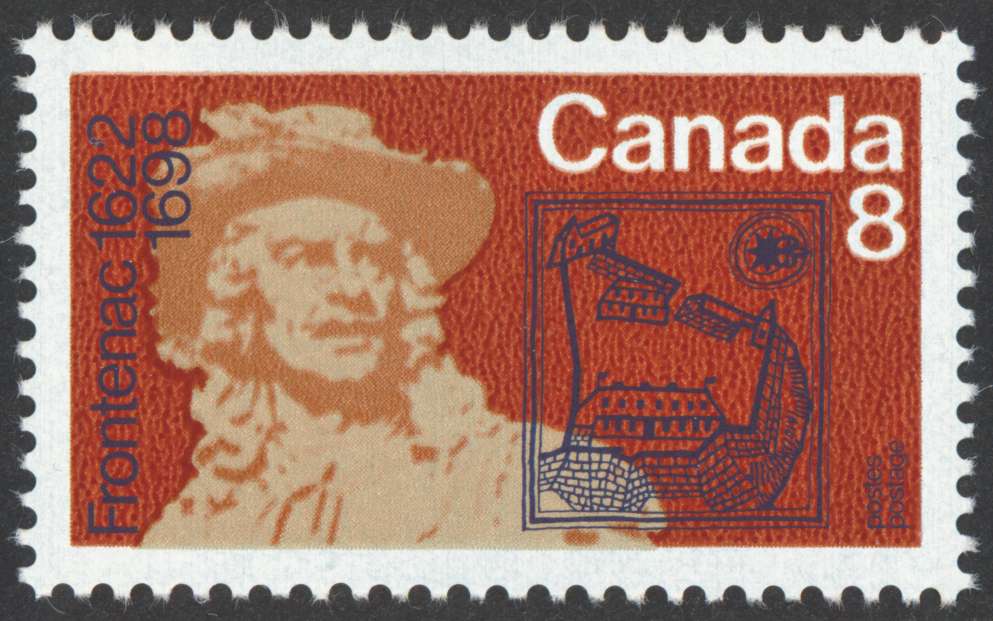
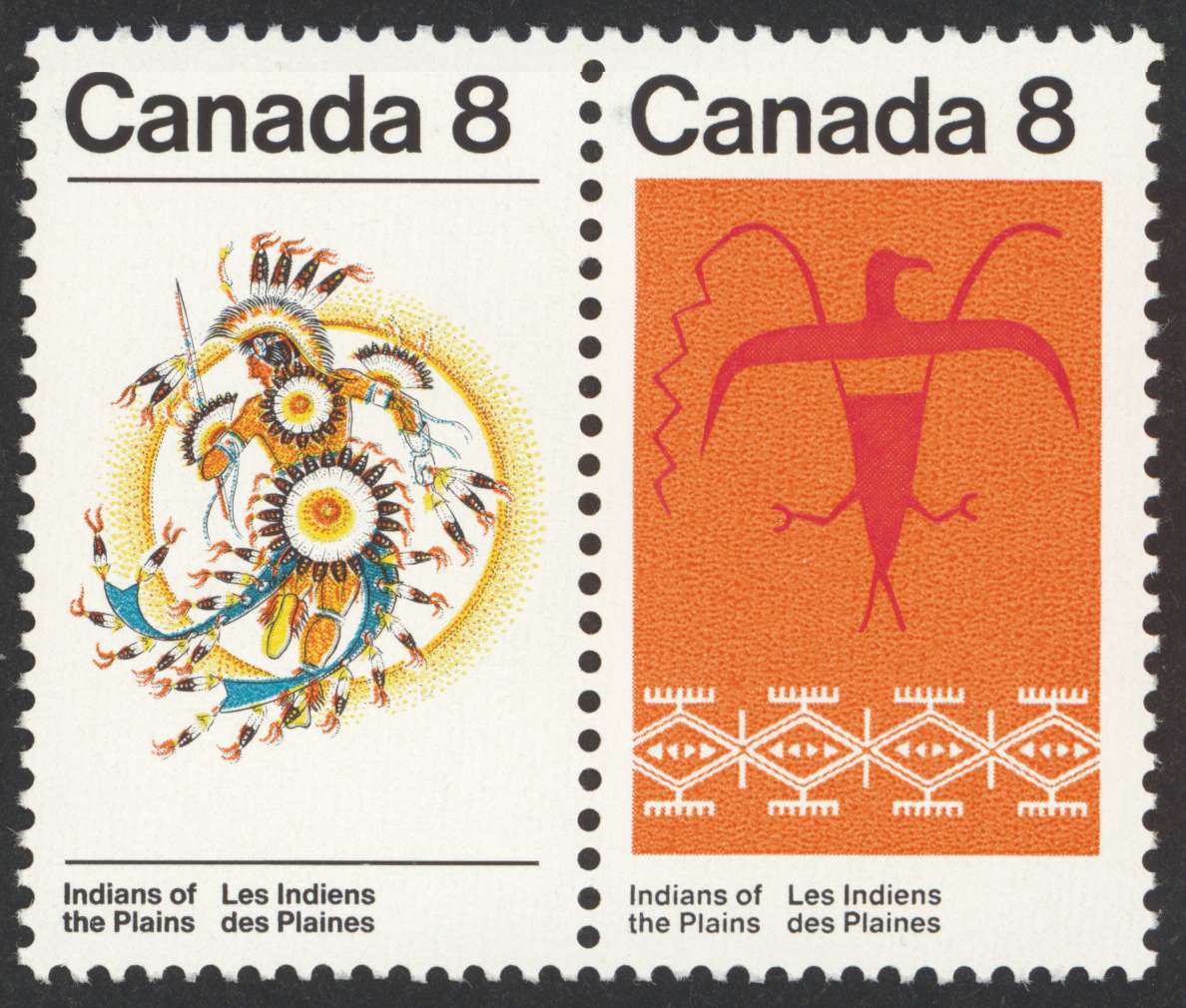
Three of the four 1972 commemoratives. Part of the print run of the 1972 commemoratives had
phosphor bar tagging. This required an extra gravure cylinder.
|
The first stamps to use three-colour gravure (four-colour with the tagging) and three-colour intaglio were the 8¢ Coastal Ships quartet issued on 24 September 1975.
In 1976, Canada and the United States commemorated the U.S. bicentennial with a joint issue featuring common design elements, a map of the eastern seaboard and a portrait of Benjamin Franklin. BABN printed the stamp on the Goebel press using three-colour gravure and one-colour engraving. The master die for the engraved part of the design was a joint Canada-U.S. production. We were working in metric and the U.S. had to be in inches. The American engraver visiting Ottawa commented that if the Lord had wanted stamps to be in metric, He would have had 10 disciples instead of 12.
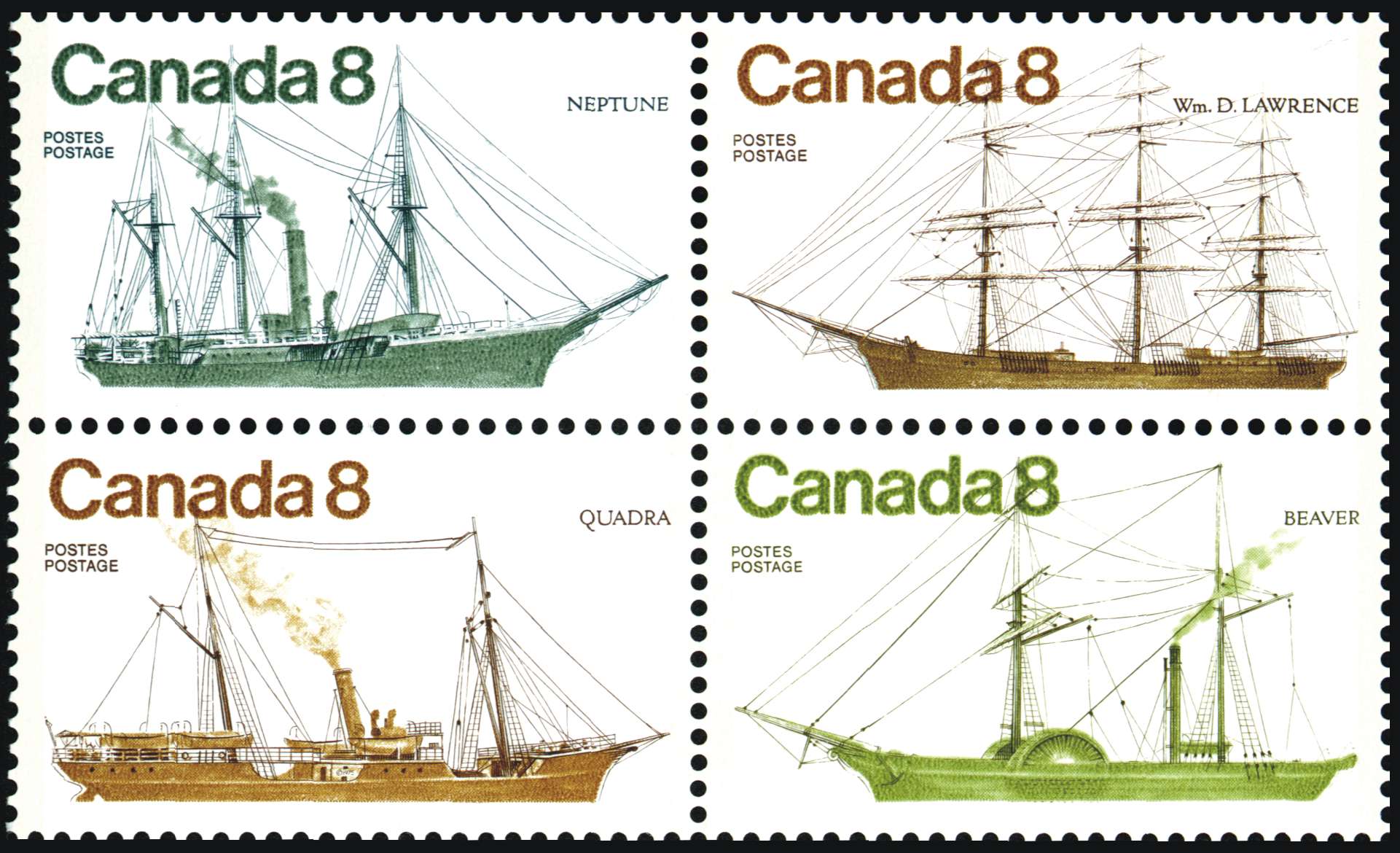
1975 8¢ Coastal Ships quartet – three-colour gravure plus tagging and three-colour intaglio for the se-tenant block of four. Engraved by Gordon Yorke. |
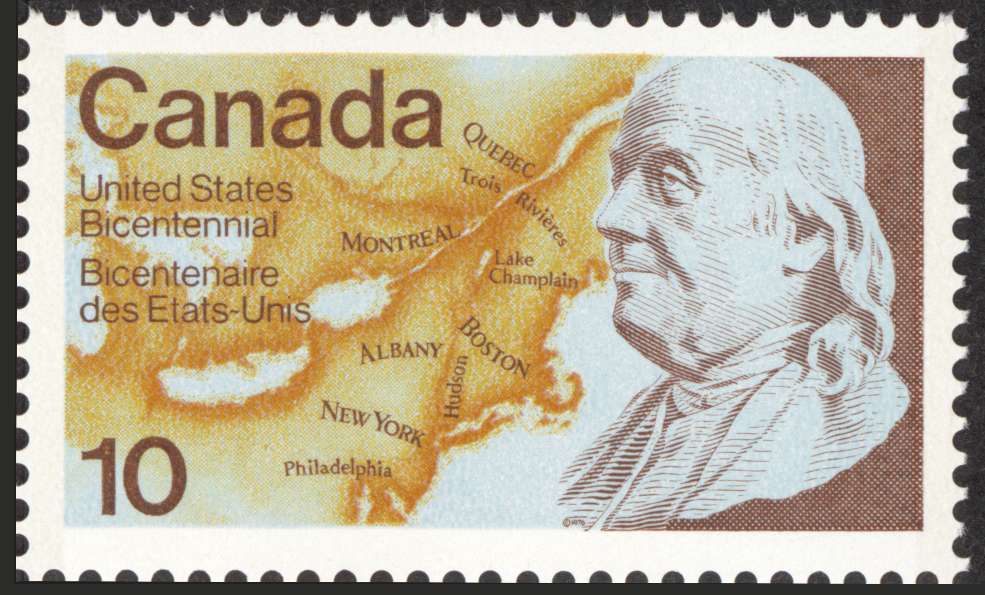
1976 10¢ U.S. Bicentennial – three-colour gravure plus tagging and one-colour intaglio. |
Aerogrammes of the Canada Goose design were produced on the press using two gravure units with the patterned gumming applied on a third unit. They were sheeted out 4-on with the die cutting carried out in a separate bindery operation.
Overall, the Goebel press was a very efficient machine, and returned reasonable profits on the investment. It could produce stamps quickly if needed, like the two-colour gravure 6¢ Louis Riel which was an afterthought in the 1970 stamp program. We even did a rush job on a three-colour gravure stamp for Zaire when encouraged to do so by the Canadian government.
The stamp booklet operation went well, and was very profitable. Incidentally, the Booklet Criss-Cross machine was never used. We found that by using a small jig-holder device, our staff could do it faster than the machine.
To see a roll of plain, gummed paper enter into the press at one end and come out with combined gravure and intaglio prints, tagged, die-perforated, dried, sheeted, examined, and counted ready for packaging was a sight to behold. All visitors were impressed. We displayed some of the cylinders at the RA Stamp Show in Ottawa (ORAPEX) in the 1970s, and this was appreciated by collectors.
Looking back now, over forty years later, in spite of all the early problems, it seems fitting that the first stamp printed on the Goebel press was the beautiful Nonsuch commemorative which included an engraving by George Gundersen. In 1986, nearly twenty years later, the final Goebel commemoratives would be the EXPO 86 stamps.
The very last stamps printed on the Goebel press were in a booklet pane issued on 18 January 1989. The pane consisted of three 2¢, one 6¢, and one 38¢ stamp showing the Parliament buildings.
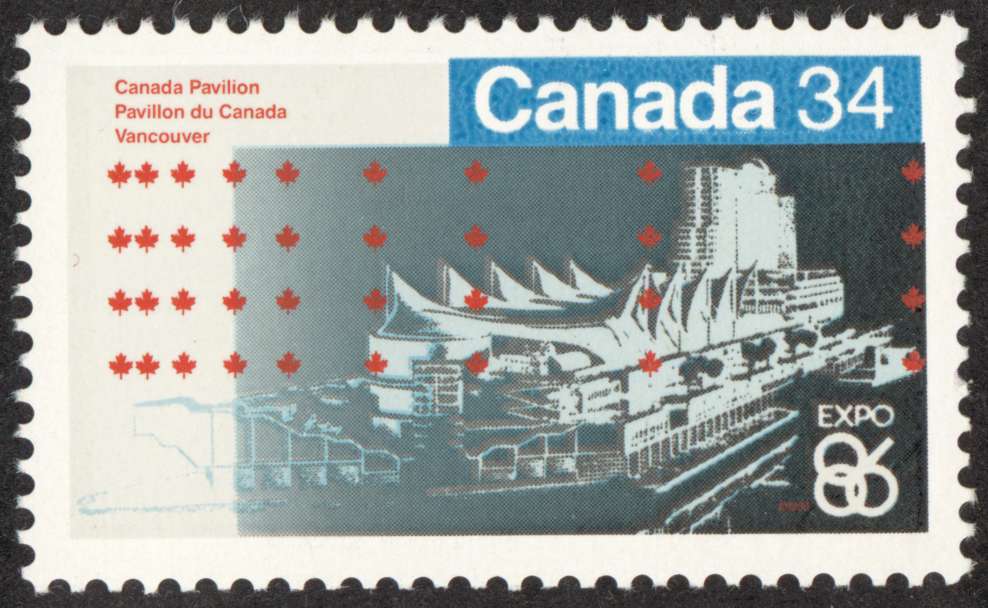
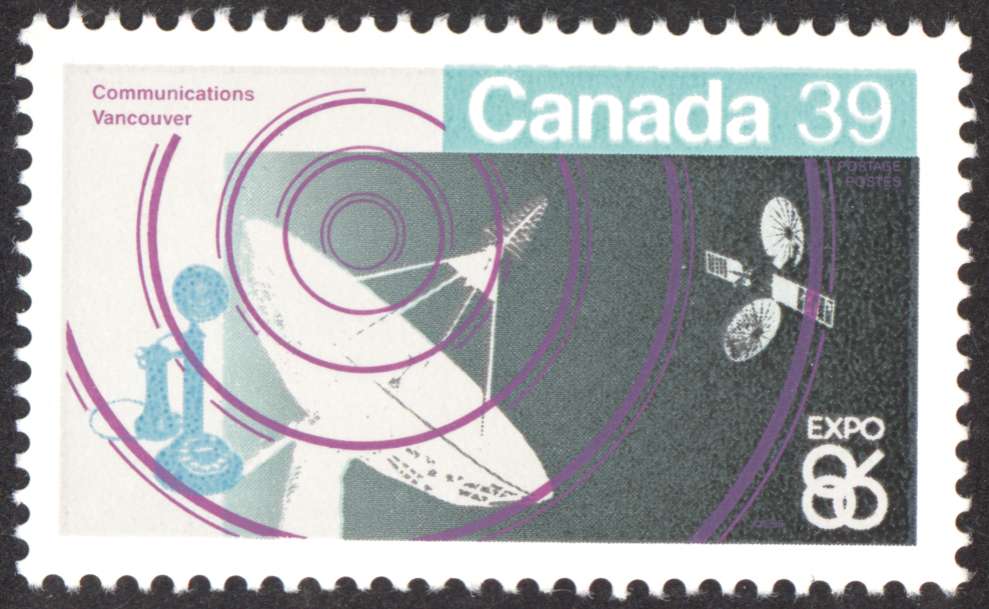
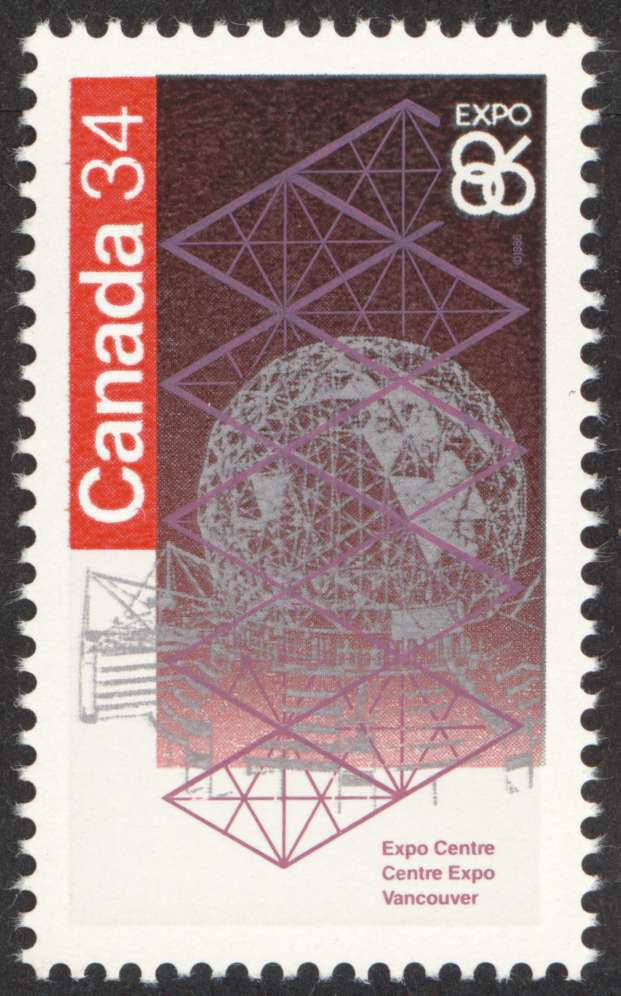
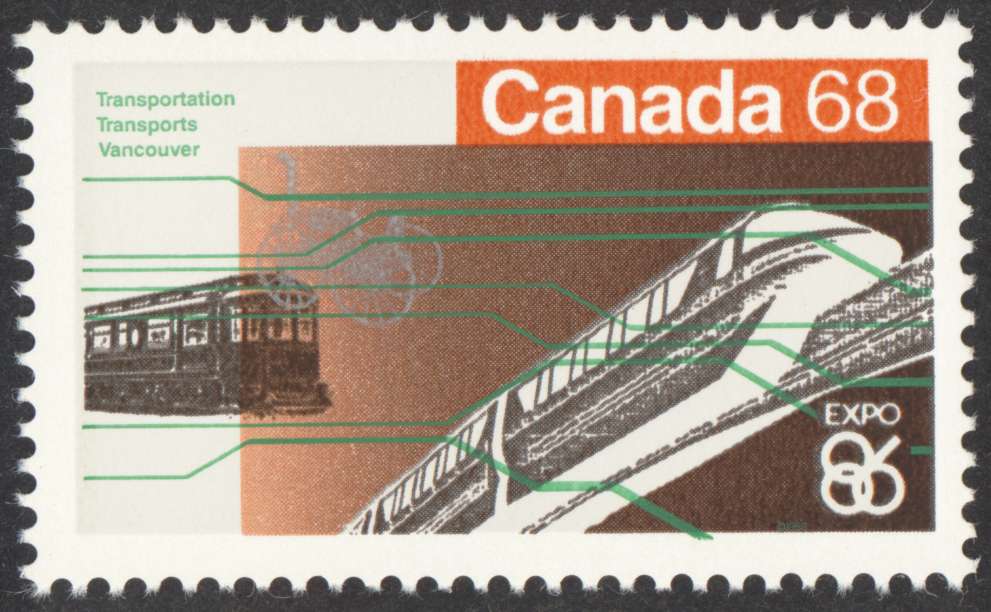
1986 EXPO 86 in Vancouver, the last commemoratives printed on the Goebel press – three-colour gravure plus tagging and one-colour intaglio. |
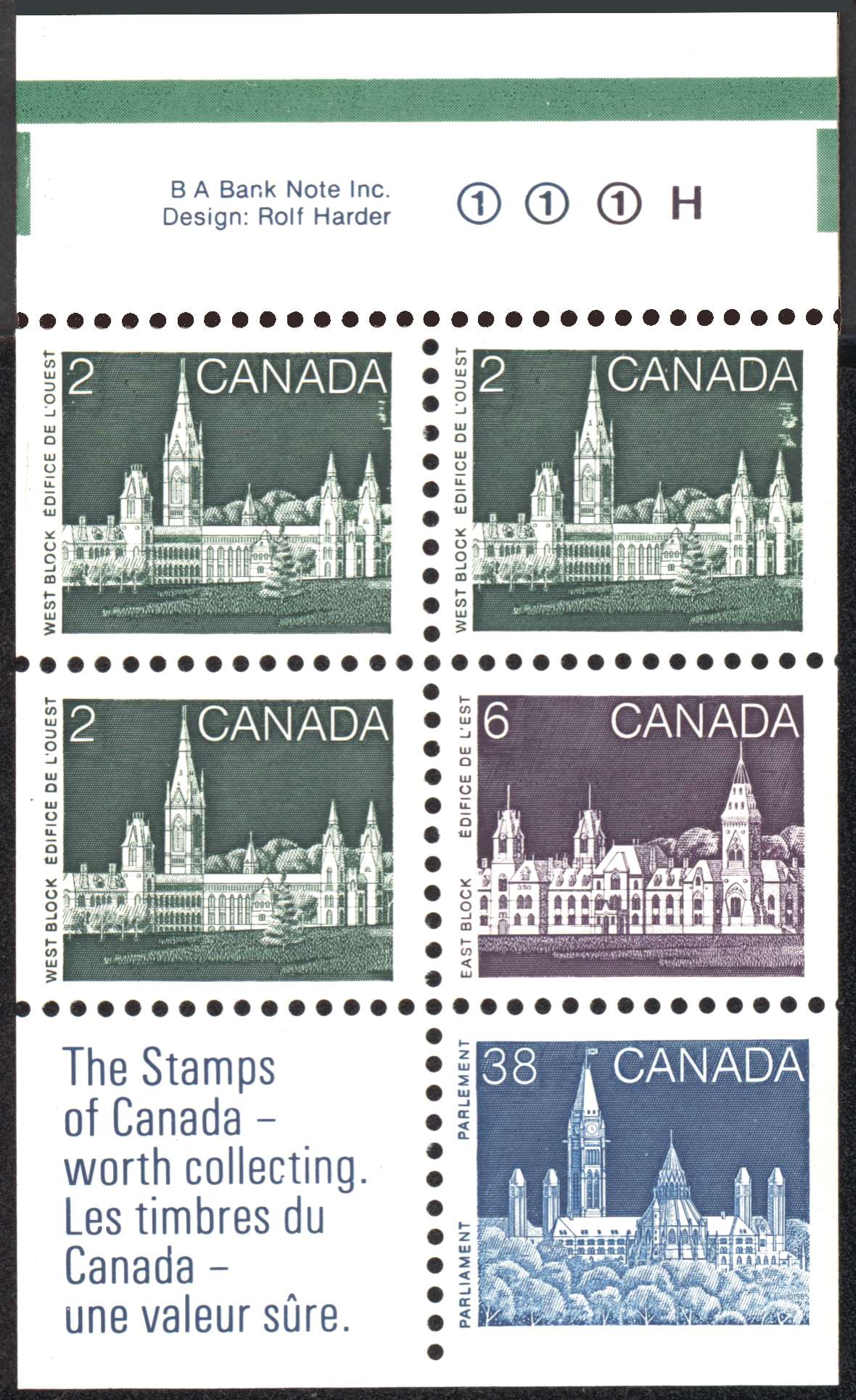
1989 50¢ booklet pane, the last stamps printed on the Goebel press – one-colour gravure (the green bars at the top) plus tagging and three-colour intaglio. Engraved by Robert Couture. |
Page 1 - History | Timing | Stamp printing contract | Goebel
press configuration
Page 2 - Manufacturing the cylinders
Page 3 - Producing the stamps
Page 4 - The early months | Later production
Page 5 - People behind the Goebel press | Spoilage & production
approval | Afterthoughts | Acknowledgements | References
About the author
Ken Sargent received a B. Sc. in Chemical Engineering from the University of Saskatchewan. In 1947, he came to BABN and began a 38-year career in the security printing industry. At the time of the Goebel press acquisition, he was Vice-President and General Manager. Ken was President of the Company for seven years prior to his retirement in 1985. He was a friend and supporter of the philatelic community as evidenced by a letter from Richard Malott on the occasion of his retirement.
Copyright © 2010 Ken Sargent and Leopold Beaudet
Web design copyright © 2013-2024 The British North America Philatelic Society.
The documents on this website are for informational and non-commercial or personal use only.
Documents on this website shall not be used on other websites or for commercial purposes without permission.
This page was last modified on 2016-08-27
